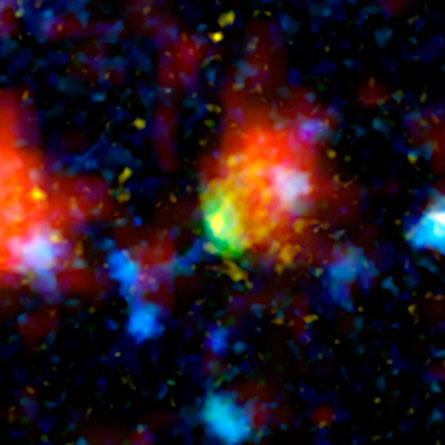Talk about a baby boom. Using several telescopes ranging from radio to the infrared, astronomers have discovered that a remote galaxy, 12.3 billion light-years away, is churning out 1,000 to 4,000 newborn stars a year.

That makes the galaxy, seen as it appeared just when the cosmos was just 1.3 billion years old, the star-forming champ among galaxies in the early universe. In contrast, the modern Milky Way makes only about 10 new stars a year.
Dubbed Baby Boom, the galaxy is thought to be an amalgam of galaxies that have smashed together, producing the prodigious star formation rate.
Although researchers have seen such galaxies, known as starbursts, from when the universe was older, they had never before seen such a starmaker from when the universe was this young, notes Peter Capak of the California Institute of Technology in Pasadena. He and his colleagues describe their findings in the July 10 Astrophysical Journal Letters.
Astronomers first identified the galaxy with the Hubble Space Telescope and Japan’s Subaru Telescope atop Hawaii’s Mauna Kea, but images with these visible-light observatories revealed nothing special about the remote body.
Followup observations with NASA’s infrared Spitzer Space Telescope and with the James Clerk Maxwell telescope, which detects radiation at submillimeter radio wavelengths and is atop Maun Kea, reveal the galaxy’s brilliant nature. That’s because young stars, which radiate copious amounts of ultraviolet light, produce lots of dust. The dust absorbs the ultraviolet radiation and re-emits it at infrared and submillimeter wavelengths.
Researchers calculate that if the galaxy continues to make stars at such a high rate for another 50 million years — relatively short on the astronomical time scale — it could become one of the most massive galaxies known in the universe.







